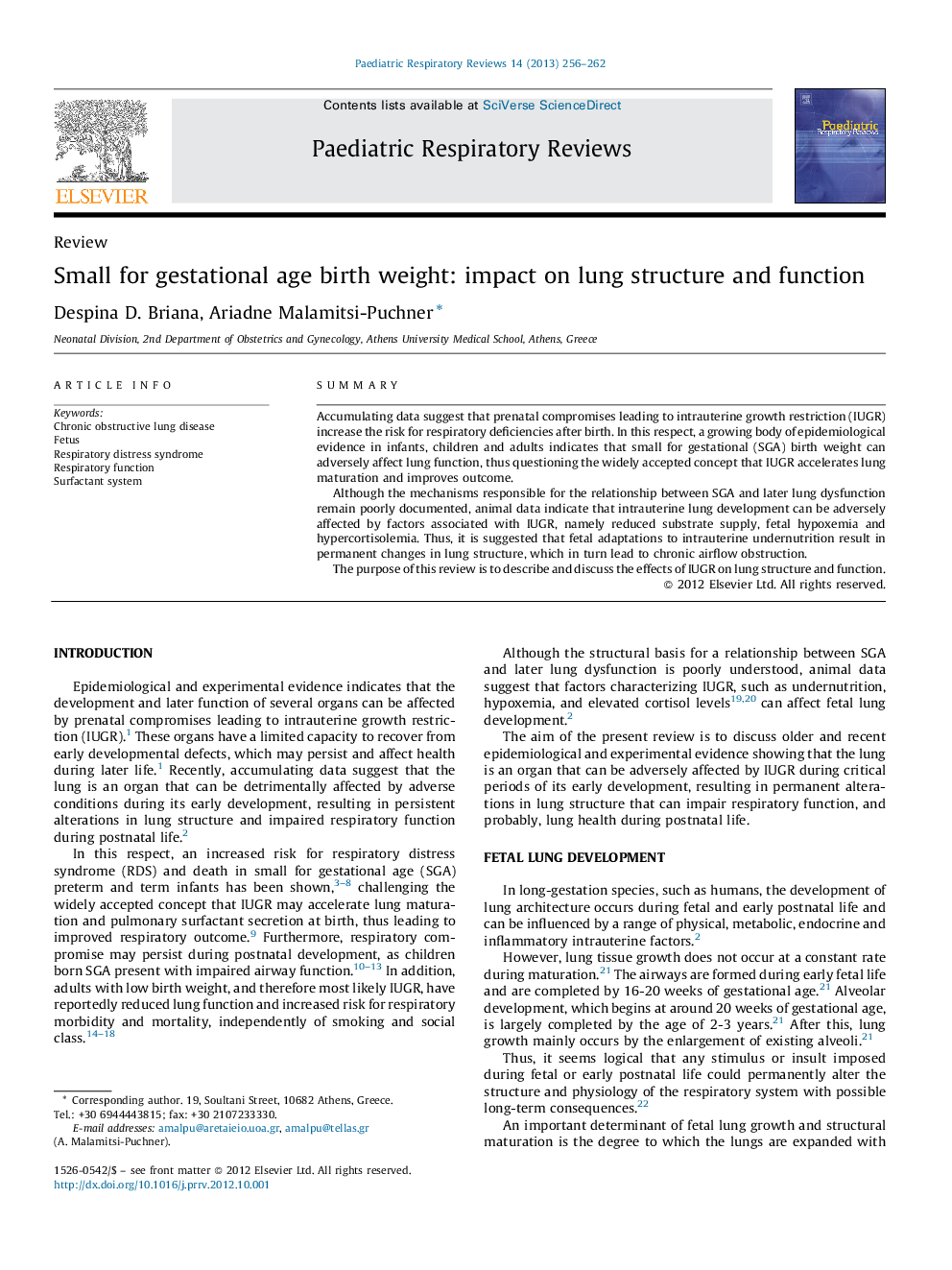| Article ID | Journal | Published Year | Pages | File Type |
|---|---|---|---|---|
| 4171082 | Paediatric Respiratory Reviews | 2013 | 7 Pages |
SummaryAccumulating data suggest that prenatal compromises leading to intrauterine growth restriction (IUGR) increase the risk for respiratory deficiencies after birth. In this respect, a growing body of epidemiological evidence in infants, children and adults indicates that small for gestational (SGA) birth weight can adversely affect lung function, thus questioning the widely accepted concept that IUGR accelerates lung maturation and improves outcome.Although the mechanisms responsible for the relationship between SGA and later lung dysfunction remain poorly documented, animal data indicate that intrauterine lung development can be adversely affected by factors associated with IUGR, namely reduced substrate supply, fetal hypoxemia and hypercortisolemia. Thus, it is suggested that fetal adaptations to intrauterine undernutrition result in permanent changes in lung structure, which in turn lead to chronic airflow obstruction.The purpose of this review is to describe and discuss the effects of IUGR on lung structure and function.
